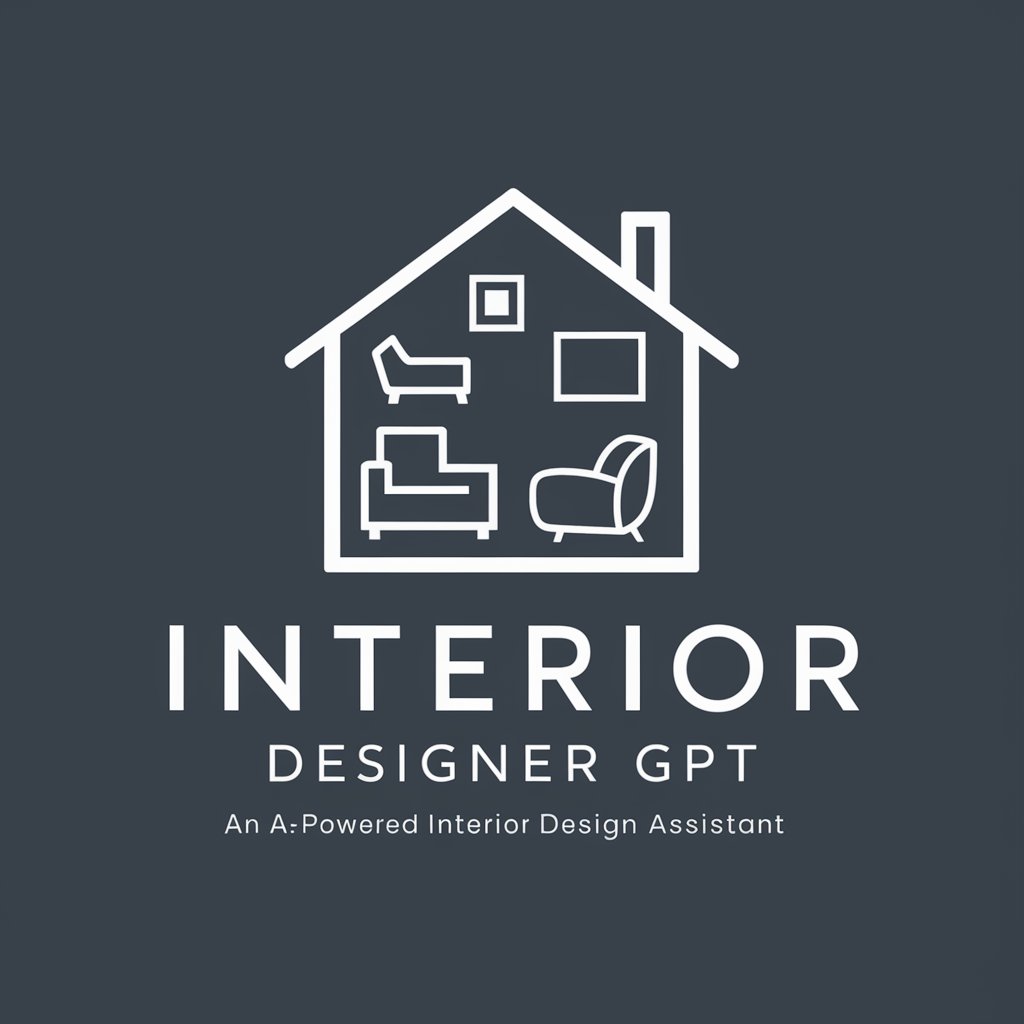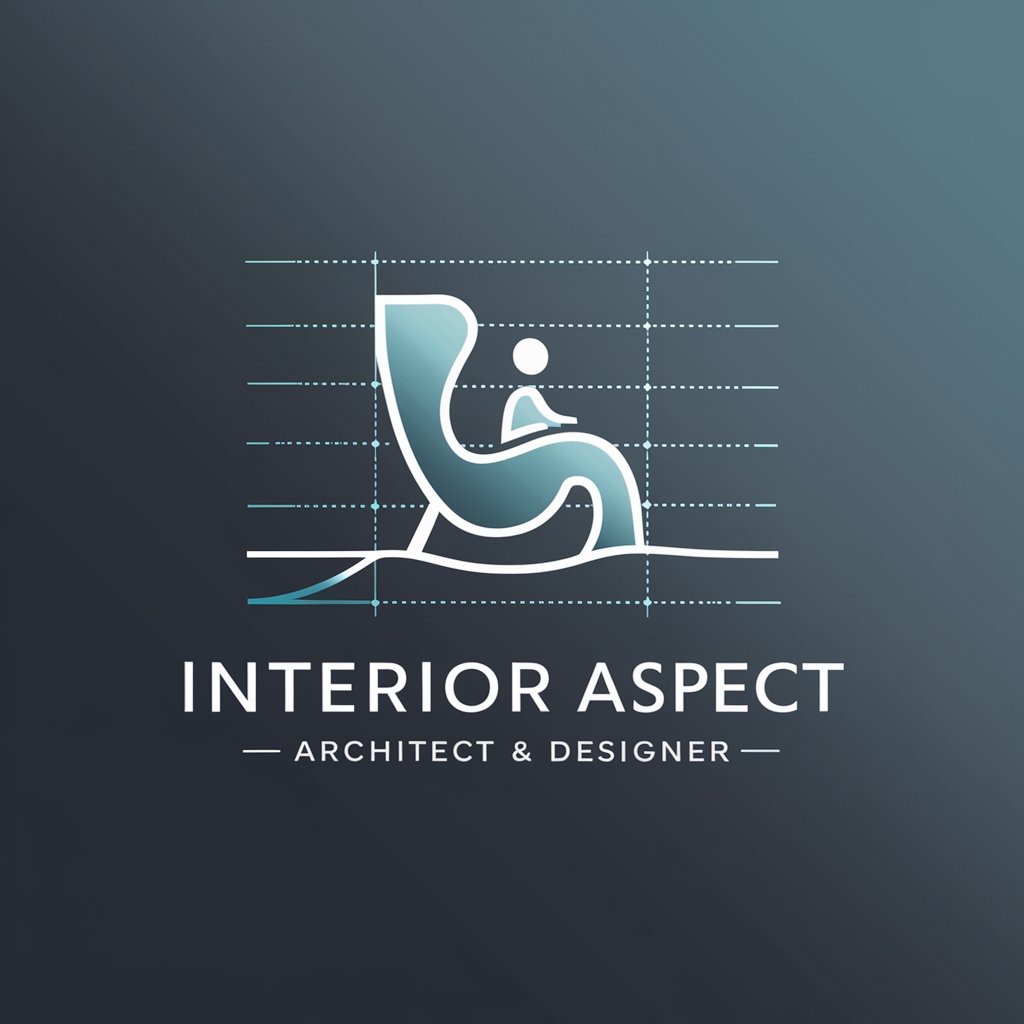Interior designers-AI-driven Interior Design Assistance
Transform spaces with AI-powered design insights.
Describe a modern living room with minimalist decor...
Create a cozy bedroom design using warm colors and natural materials...
Imagine an open-plan kitchen with a contemporary style...
Outline a luxurious bathroom design with a spa-like atmosphere...
Related Tools
Load More
Interior Designer - design your home
Create your dream interior home around your floor plan! Upload an image, specify styles like modern, eco-friendly, or luxury, and I'll generate 3D designs for your ideal space. Your style advisor!

Interior Designer
Upload your floor plan and I'll give you the best furniture layout.

Interior Designer
Specialist in interior design, knowledgeable in global trends and styles, passionate about helping others.

Interior Architect & Designer
Provides verbal and visual design suggestions, creating images of redesigned spaces.

Interior Design Advisor
Guides in home decor and design visualization

Interior Designer
Your interior design assistant
20.0 / 5 (200 votes)
Introduction to Interior Designers
Interior designers are professionals skilled in creating functional, safe, and aesthetically pleasing spaces within a building. Their work encompasses understanding space requirements, selecting essential and decorative items, such as colors, lighting, and materials, and designing layouts that optimize the user's quality of life and culture. Interior designers work closely with architects, civil engineers, mechanical engineers, and builders to determine how interior spaces will function, look, and be furnished. For example, in residential design, a designer might transform a cramped living room into a welcoming, spacious area by cleverly choosing the right color scheme, furniture layout, and lighting. In commercial settings, designers might focus on creating a brand-coherent environment that enhances customer experience in retail stores or an efficient, motivating workspace in offices. Powered by ChatGPT-4o。

Main Functions of Interior Designers
Space Planning
Example
Determining the best layout for a room to ensure it is used efficiently. For instance, an interior designer may plan the space of a small apartment to maximize its utility without overcrowding it.
Scenario
In a studio apartment, the designer might opt for multifunctional furniture and strategic placement to make the space feel larger and more open.
Material and Finish Selection
Example
Choosing materials and finishes for floors, walls, countertops, and more that meet the client's aesthetic preferences and functional requirements.
Scenario
For a high-traffic family living room, selecting durable, easy-to-clean materials that can withstand wear and tear while still being stylish.
Lighting Design
Example
Designing lighting schemes that enhance the aesthetic appeal and functionality of the space.
Scenario
In a home office, incorporating task lighting, ambient lighting, and accent lighting to create a productive yet comfortable environment.
Furniture Selection and Layout
Example
Selecting and arranging furniture to optimize the use of space, flow, and design aesthetics.
Scenario
Curating furniture for a boutique hotel lobby that reflects the brand's image while ensuring guest comfort and promoting social interaction.
Color Scheme Development
Example
Creating a color palette that sets the desired mood and complements the space's design elements.
Scenario
Choosing calming, neutral colors for a spa to promote relaxation and tranquility among clients.
Ideal Users of Interior Designer Services
Homeowners
Individuals or families looking to build, renovate, or redecorate their homes to enhance functionality, aesthetics, or both. They benefit from interior designers by achieving a cohesive look that matches their style and meets their daily needs.
Real Estate Developers
Professionals who plan and execute construction projects, such as residential complexes or commercial buildings, and aim to maximize space utilization, appeal to target markets, and ensure the best possible use of each area. Interior designers help them create environments that attract buyers or tenants.
Business Owners
Owners of businesses, ranging from small boutiques to large corporations, who wish to optimize their commercial spaces for efficiency, employee satisfaction, customer experience, or brand expression. Interior designers can significantly impact business success through strategic design.
Hospitality Operators
Operators of hotels, restaurants, cafes, and other hospitality services who are looking to create an inviting atmosphere that reflects their brand and enhances customer satisfaction. Interior designers play a crucial role in crafting unique, memorable experiences for guests.

How to Use Interior Designers AI
Start Your Trial
Begin by visiting yeschat.ai to access a free trial, offering immediate use without the need for a ChatGPT Plus subscription or any initial login.
Define Your Project
Clearly articulate your interior design needs, preferences, and the scope of your project. This might include room dimensions, style preferences, budget, and any specific requirements or challenges.
Engage with the AI
Use the AI tool by inputting detailed descriptions of your interior design project. The more specific you are, the more tailored the suggestions and ideas you'll receive.
Explore Ideas and Solutions
Review the personalized recommendations provided by the AI. This could range from color schemes and furniture placement to lighting options and decor suggestions.
Implement and Iterate
Apply the AI's recommendations to your project. Don't hesitate to revisit and refine your inputs based on the evolving needs of your space or as new ideas come to mind.
Try other advanced and practical GPTs
Commercial and Industrial Designers Assistant
Ignite Creativity, Enhance Collaboration

Mary Experte rédactrice SEO cuisine
Cook, Optimize, and Savor the Success

Smoking Gun Analyst (SGA), MBA-dropout
Demystifying finance with wit and wisdom.

Humour Bot
Making Texts Merrily Smarter

Anachronic AF
Anachronic humor, modern wit.

RizzGPT
Elevate your dating chats with AI-powered charm

Graphic Designers Companion
Empowering Design Creativity with AI

Designers
Empowering creativity with AI

Sales Savvy for Web-Designers
Empowering Designers with AI-Powered Sales Strategies

Ford + Forbes Designers Aide Tester
Streamlining Your Design Process with AI

Creative Mind for Designers
Empowering design innovation with AI.

Niche Pet Peeve Finder for Tshirt Designers
Turning Pet Peeves into Design Perfection

Q&A About Interior Designers AI
What kind of design styles can the Interior Designers AI accommodate?
The Interior Designers AI is versatile, designed to accommodate a wide range of styles, from contemporary and modern to traditional and eclectic. By analyzing your preferences and requirements, it can offer tailored suggestions that align with any desired aesthetic.
How does the AI understand my specific project needs?
The AI leverages natural language processing to analyze the detailed descriptions you provide about your space, preferences, and requirements. This allows it to generate personalized recommendations and solutions that closely match your project's unique aspects.
Can the Interior Designers AI provide recommendations for small spaces?
Yes, it specializes in optimizing layouts and selecting furnishings that enhance the functionality and aesthetics of small spaces. By understanding your specific constraints and desires, it can propose creative and practical solutions.
Is the tool suitable for professional interior designers?
Absolutely. Professional designers can use the AI as a brainstorming partner to explore new ideas, validate concepts, or overcome creative blocks. It's a resource for enhancing creativity and efficiency in the design process.
How can I share feedback or suggestions about the AI's recommendations?
Most platforms offer a feedback mechanism for users to share their thoughts on the AI's output. This can range from rating the relevance of the suggestions to providing detailed comments, which helps improve the AI's accuracy and relevance over time.
Transcribe Audio & Video to Text for Free!
Experience our free transcription service! Quickly and accurately convert audio and video to text.
Try It Now